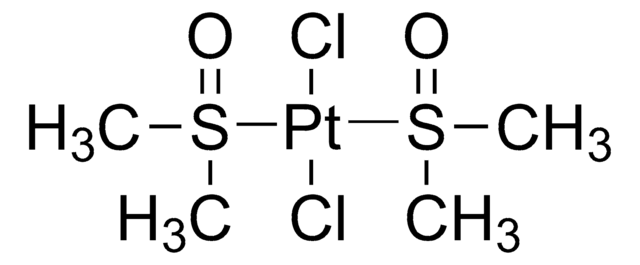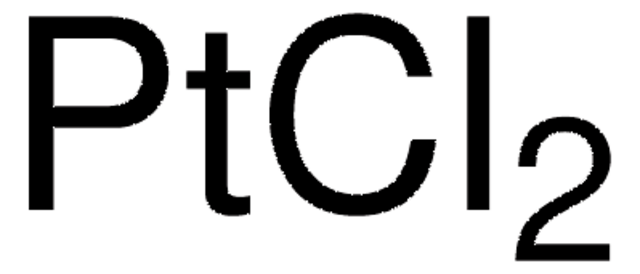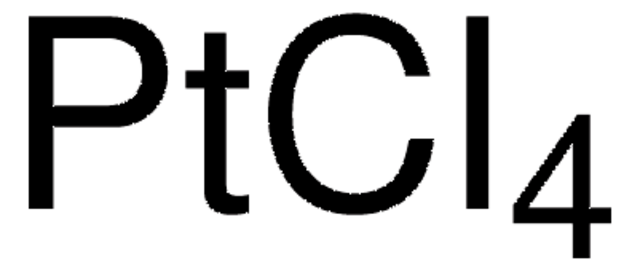520853
Potassium tetrachloroplatinate(II)
≥99.9% trace metals basis
Sinónimos:
Potassium platinum(II) chloride
About This Item
Productos recomendados
grade
for analytical purposes
assay
≥99.9% trace metals basis
form
powder or crystals
composition
Pt, ≥46.2%
impurities
≤1000.0 ppm Trace Metal Analysis
density
3.38 g/mL at 25 °C (lit.)
SMILES string
[K+].[K+].Cl[Pt--](Cl)(Cl)Cl
InChI
1S/4ClH.2K.Pt/h4*1H;;;/q;;;;2*+1;+2/p-4
InChI key
RVRDLMCWUILSAH-UHFFFAOYSA-J
¿Está buscando productos similares? Visita Guía de comparación de productos
General description
Application
- As a precursor to prepare platinum nanoparticles and mesoporous platinum nanospheres with tunable pore sizes.
- As a catalyst for selective methane oxidation through C-H activation. In addition, to synthesize octahedral Pd@Pt1.8Ni nanocrystals with an ultrathin PtNi alloy shell. The nanocrystals exhibited better ORR activity and durability than the commercial Pt/C for fuel cells.
- To prepare Pt atomic clusters were synthesized using a one-step carbon-defect-driven electroless deposition method. These catalysts demonstrated low overpotential, high activity for the hydrogen evolution reaction, exceptional stability, and improved utilization efficiency of Pt. The Pt-AC/DG (Atomic Clusters/Defective Graphene) cathode showed excellent hydrogen production activity, remarkable stability, and significantly reduced Pt usage compared to the Pt/C catalyst.
- As a starting material to synthesize cyclometalated platinum(II) complexes with long-lived luminescence in solution.
Features and Benefits
signalword
Danger
hcodes
Hazard Classifications
Acute Tox. 3 Oral - Eye Dam. 1 - Resp. Sens. 1 - Skin Irrit. 2 - Skin Sens. 1
Storage Class
6.1C - Combustible acute toxic Cat.3 / toxic compounds or compounds which causing chronic effects
wgk_germany
WGK 1
flash_point_f
Not applicable
flash_point_c
Not applicable
ppe
Eyeshields, Faceshields, Gloves, type P2 (EN 143) respirator cartridges
Elija entre una de las versiones más recientes:
¿Ya tiene este producto?
Encuentre la documentación para los productos que ha comprado recientemente en la Biblioteca de documentos.
Los clientes también vieron
Nuestro equipo de científicos tiene experiencia en todas las áreas de investigación: Ciencias de la vida, Ciencia de los materiales, Síntesis química, Cromatografía, Analítica y muchas otras.
Póngase en contacto con el Servicio técnico














